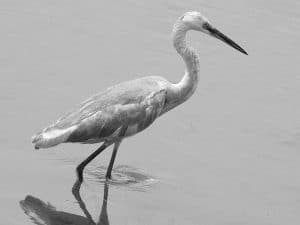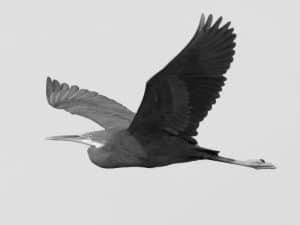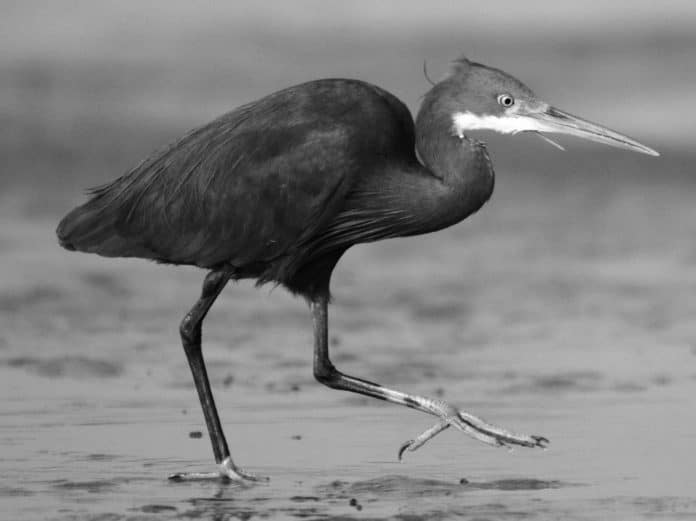Introduction to the Western Reef-Heron
Welcome to the fascinating world of the Western Reef-Heron, a unique avian species that graces the coastal regions of Tanzania with its graceful presence. The Western Reef-Heron in Tanzania, scientifically known as Egretta gularis, is a stunning bird that captivates the hearts of bird enthusiasts and nature lovers alike. Its distinct appearance and intriguing behaviors make it a subject of immense interest for researchers and conservationists. In this article, we will delve into the world of the Western Reef-Heron, exploring its habitat, behavior, conservation status, and the opportunities it presents for birdwatching in Tanzania. Join us as we embark on a journey to uncover the mysteries of this enigmatic avian species and the breathtaking landscapes it calls home.

Tanzania, with its diverse ecosystems and rich biodiversity, provides a thriving habitat for an array of wildlife, including the Western Reef-Heron. Nestled along the coastline of this East African nation, the Western Reef-Heron finds its sanctuary amidst the stunning natural beauty of the region. As we venture deeper into the article, we will unveil the intricate details of the Western Reef-Heron’s habitat, shedding light on the specific locations within Tanzania where this magnificent bird can be observed in its natural environment. Prepare to be transported to the enchanting coastal landscapes where the Western Reef-Heron spreads its wings and takes flight, offering a glimpse into a world of untamed beauty and tranquility.
The Habitat of the Western Reef-Heron in Tanzania
The habitat of the Western Reef-Heron in Tanzania is a marvel of natural wonder, characterized by its coastal wetlands, mangrove forests, and estuarine environments. These unique ecosystems provide the perfect haven for the Western Reef-Heron, offering abundant food sources and nesting sites essential for its survival. The intertidal zones along the Tanzanian coastline serve as prime feeding grounds for the Western Reef-Heron, where it can be observed foraging for small fish, crustaceans, and other aquatic prey with remarkable agility and precision.
Mangrove forests, with their intricate root systems and brackish water, form vital components of the Western Reef-Heron’s habitat, providing shelter and breeding grounds for the species. These dense coastal forests not only offer protection from predators but also contribute to the overall biodiversity of the region, creating a delicate balance of life within the Western Reef-Heron’s habitat. As we explore the diverse landscapes of Tanzania, we will uncover the profound significance of these habitats in sustaining the Western Reef-Heron and preserving the delicate ecological equilibrium of the coastal regions.
The estuarine environments of Tanzania play a pivotal role in shaping the habitat of the Western Reef-Heron, offering a mosaic of tidal flats, salt marshes, and shallow lagoons that teem with life. These dynamic and productive ecosystems are essential for the survival of the Western Reef-Heron, providing a rich tapestry of food resources and nesting opportunities. Within these vibrant estuarine habitats, the Western Reef-Heron thrives, exhibiting its remarkable adaptability to the ever-changing rhythms of the tides and the intricate web of life that sustains the coastal ecosystem.
Behavior and Characteristics of the Western Reef-Heron

The Western Reef-Heron, with its striking plumage and elegant stature, embodies a myriad of captivating behaviors and characteristics that set it apart as a truly remarkable avian species. As we delve into the world of the Western Reef-Heron, we will unravel the intricacies of its behavior, from its foraging techniques and mating displays to its migratory patterns and social dynamics within the coastal habitats of Tanzania. Prepare to be enthralled by the graceful movements and captivating displays of the Western Reef-Heron as we unveil the secrets of its enchanting behavior.
The feeding behavior of the Western Reef-Heron is a spectacle to behold, as it gracefully stalks the shallow waters of the coastal wetlands, employing its keen eyesight and agile reflexes to capture its prey. With stealth and precision, the Western Reef-Heron wades through the intertidal flats, employing a variety of hunting techniques, from patient stillness to sudden darting movements, as it pursues its aquatic quarry. Witnessing this graceful predator in action is a testament to the remarkable adaptations that have allowed the Western Reef-Heron to thrive in its coastal habitat, showcasing the delicate balance between predator and prey in the natural world.
During the breeding season, the Western Reef-Heron engages in elaborate courtship displays, characterized by intricate aerial acrobatics and mesmerizing rituals that culminate in the formation of lifelong pair bonds. These captivating displays of affection and commitment underscore the deep-seated instincts and social complexities of the Western Reef-Heron, offering a glimpse into the intimate lives of these majestic birds. As we explore the behavior of the Western Reef-Heron, we will uncover the profound significance of these mating rituals and the role they play in perpetuating the species within its coastal habitat in Tanzania.
Conservation Efforts for the Western Reef-Heron
The Western Reef-Heron, like many other avian species, faces a myriad of challenges in its struggle for survival, ranging from habitat loss and degradation to human disturbances and climate change. In the face of these daunting threats, concerted conservation efforts have been initiated to safeguard the future of the Western Reef-Heron and its fragile coastal habitat in Tanzania. Join us as we delve into the realm of conservation, shedding light on the initiatives and strategies that have been implemented to protect the Western Reef-Heron and preserve the ecological integrity of its coastal home.
Habitat preservation stands at the forefront of conservation efforts for the Western Reef-Heron, with a focus on safeguarding the critical coastal wetlands, mangrove forests, and estuarine environments that form the lifeblood of the species’ existence. Through the establishment of protected areas and the enforcement of conservation regulations, dedicated organizations and governmental agencies are working tirelessly to ensure the long-term viability of the Western Reef-Heron’s habitat, mitigating the threats posed by human encroachment and unsustainable development along the Tanzanian coastline.
In addition to habitat preservation, research and monitoring programs have been instrumental in advancing our understanding of the Western Reef-Heron’s ecology and behavior, providing valuable insights that inform targeted conservation strategies. By studying the movements, breeding success, and population dynamics of the Western Reef-Heron, conservationists have been able to identify key areas of vulnerability and implement measures to mitigate the impact of human activities and environmental changes on the species. Through collaborative research efforts and citizen science initiatives, a network of dedicated individuals and organizations is working in unison to secure a brighter future for the Western Reef-Heron in Tanzania.
Birdwatching Opportunities in Tanzania

Tanzania, with its breathtaking landscapes and diverse avian fauna, offers unparalleled opportunities for birdwatching enthusiasts to immerse themselves in the wonders of nature and witness the beauty of the Western Reef-Heron in its natural habitat. As we embark on a journey to explore the birdwatching opportunities in Tanzania, we will uncover the hidden gems and pristine wilderness areas where the Western Reef-Heron can be observed, providing a unique and enriching experience for avid birdwatchers and nature enthusiasts alike.
The coastal wetlands and estuarine habitats of Tanzania serve as prime locations for observing the Western Reef-Heron in its element, offering a glimpse into the daily lives and behaviors of these captivating birds. Whether wading through the shallow waters in search of prey or engaging in intricate courtship displays, the Western Reef-Heron provides a captivating spectacle for birdwatching enthusiasts, inviting them to witness the grace and beauty of this enigmatic species amidst the stunning coastal landscapes of Tanzania.
In addition to the coastal regions, the mangrove forests of Tanzania present another haven for birdwatching enthusiasts seeking to encounter the Western Reef-Heron in its natural habitat. These lush and biodiverse ecosystems harbor a wealth of avian species, including the Western Reef-Heron, offering a tranquil and immersive birdwatching experience amidst the verdant canopies and winding waterways of the mangrove forests. With patience and keen observation, birdwatchers can marvel at the elegant movements and striking plumage of the Western Reef-Heron as it navigates the tangled roots and brackish waters of its coastal sanctuary.
The Importance of Preserving the Habitat of the Western Reef-Heron
The preservation of the Western Reef-Heron’s habitat in Tanzania holds profound significance not only for the survival of this remarkable species but also for the ecological balance and biodiversity of the coastal regions. As we reflect on the importance of preserving the habitat of the Western Reef-Heron, we are compelled to recognize the interconnectedness of all life within these delicate coastal ecosystems and the irreplaceable value they hold for future generations.
The coastal wetlands, with their intricate network of tidal channels and rich mudflats, are essential for a myriad of wildlife species, serving as vital breeding grounds, feeding areas, and migratory stopovers for countless avian and aquatic organisms. By preserving the habitat of the Western Reef-Heron, we not only safeguard the future of this iconic species but also contribute to the overall health and resilience of the coastal ecosystems, ensuring the continued provision of ecological services and resources that benefit both wildlife and human communities.
Mangrove forests, renowned for their unparalleled capacity to sequester carbon and mitigate coastal erosion, play a critical role in buffering the impacts of climate change and providing essential nursery habitats for fish and other marine species. The preservation of these vital coastal ecosystems goes hand in hand with the conservation of the Western Reef-Heron, as it ensures the sustained availability of resources and refuge for a diverse array of flora and fauna that rely on the mangroves for their survival. By safeguarding the habitat of the Western Reef-Heron, we actively contribute to the resilience and adaptability of the entire coastal ecosystem, fostering a harmonious coexistence between nature and human communities.
Conclusion
In conclusion, the Western Reef-Heron in Tanzania represents a captivating symbol of the intrinsic connection between wildlife and the natural environment, embodying the delicate balance and interdependence that characterizes coastal ecosystems. Through our exploration of the Western Reef-Heron’s habitat, behavior, conservation status, and birdwatching opportunities in Tanzania, we have gained a deeper appreciation for the profound beauty and significance of this remarkable avian species and the landscapes it inhabits.
As we look to the future, it is imperative that we continue to uphold the conservation efforts and initiatives aimed at preserving the habitat of the Western Reef-Heron and safeguarding the coastal ecosystems of Tanzania. By working together to protect these invaluable natural resources and the diverse wildlife they support, we can ensure a sustainable and thriving future for the Western Reef-Heron and the myriad of other species that call the coastal regions of Tanzania their home.
In the spirit of conservation and appreciation for the wonders of nature, let us strive to cherish and protect the Western Reef-Heron and its fascinating habitat, preserving the uncharted territories where this enigmatic bird soars and thrives amidst the timeless beauty of the Tanzanian coastline.

































